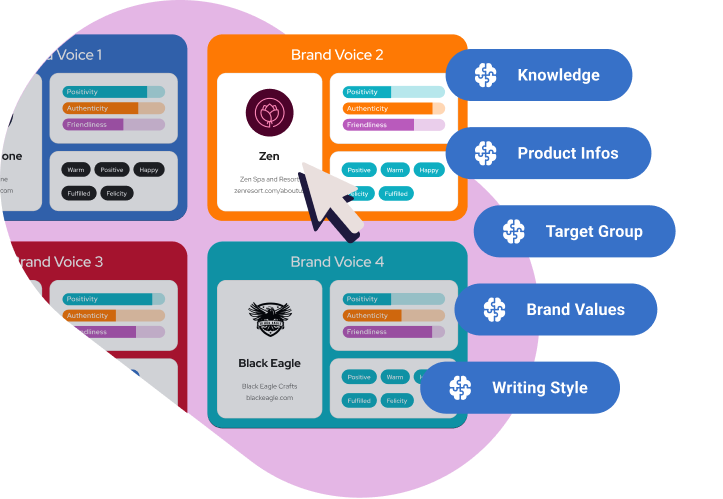As you browse online for new sunglasses, you’ve made your selection. It ticks all your boxes—the site is reliable, the design looks premium, and the price fits your budget.
But will they suit your face? Will the frame shape flatter your features?
You’re not a risk-taker. You tap a button, it opens your camera, and the sunglasses appear on your face. You get a first-hand experience of what the sunglasses would look like on your face. No guesswork. No disappointment. Just instant confidence in your purchase.
That’s Augmented Reality (AR) in eCommerce in action. It is reinvigorating trust in eCommerce shopping by making “try before you buy” a concept in eCommerce spaces.
Why is AR Revolutionizing the eCommerce Experience?
Online shopping has always had one major flaw—uncertainty. Buyers can’t touch, feel, or try products before they commit. Returns pile up because expectations don’t match reality. AR is addressing this issue by bringing the product to life in front of the buyer.
Potential customers can use AR to see how a couch fits in a room, how a makeup shade looks on their skin, or whether the sneakers fit their feet. AR creates an immersive and confident shopping experience.
The result? Happy shoppers, fewer returns, and increased sales.
Popular Use Cases of AR in eCommerce
Here are some of the popular ways in which AR has found a spot in eCommerce:
- Virtual Try-Ons: Fashion and beauty brands let shoppers see how outfits, glasses, or lipstick look before buying. Sephora, Warby Parker, and Swarovski have been trailblazers, having done this for years, allowing customers to visualize jewelry pieces in real time. No more second-guessing shades or fits.
- Social Media Filters: Brands create AR filters that let users try products in a fun, shareable way. Think Snapchat’s famous dog filter but for sunglasses or jewelry. It’s where smart marketing meets engaging entertainment.
- Furniture & Home Decor Placement: IKEA, Wayfair, and others let buyers drop virtual furniture into their rooms. See if a couch fits before dragging it home. No more measuring tape stress.
Automotive Showrooms: Car manufacturers use AR to let buyers check interiors, change colors, and explore features. Walk through a digital showroom without leaving home.
Interactive Packaging: Some brands add AR features to packaging. Scan a product to unlock tutorials, hidden content, or fun animations. A box is no longer just a box.
Immersive User Manuals: No more struggling with boring instruction booklets. AR overlays guide users step by step, showing how gadgets or furniture work. Learning feels effortless.
- Sneaker Try-Ons: Footwear brands like Nike and Adidas let users see how shoes look on their feet before ordering. No more returning the wrong size or color.
The Technology Behind AR in eCommerce
Incorporating AR technology in your e-commerce strategy relies on the following moving parts:
AR Software and Platforms: Where It All Begins
AR experiences rely on software platforms that process digital overlays in real-world environments. There are two main types:
- WebAR – No downloads are needed, as customers access AR features directly through a browser, making it fast and convenient.
- AR Apps – Dedicated applications offer deeper, more immersive experiences. These apps often support advanced features like real-time personalization and AI-driven recommendations.
Both options depend on real-time rendering and motion tracking to make objects appear natural and interactive. WebAR is great for accessibility, while apps provide a richer and more branded experience.
3D Modeling and AI: The Magic Behind Realism
For AR to feel real, products must look lifelike. That’s where 3D modeling comes in. Each product is digitally recreated with precise textures, reflections, and shadows.
But even the best models fall flat without AI. Artificial intelligence refines these models, adjusting them in real time based on lighting, perspective, and user interaction. AI also helps with:
- Facial tracking for virtual try-ons (glasses, makeup, jewelry).
- Environment mapping to place furniture or home decor in the right position.
- Gesture recognition to allow natural interaction with AR objects.
Without AI, AR would feel clunky and unconvincing. With AI, it’s eerily real.
Integration with Devices: Making AR Accessible Everywhere
For AR to work, it needs to blend seamlessly with everyday devices. Most AR applications now run on:
- Smartphones and tablets: Powered by Apple’s ARKit and Google’s ARCore, these devices handle AR with built-in motion tracking and depth sensors.
- Wearables: AR glasses (like Apple Vision Pro or Meta Quest) are shaping the future of hands-free, immersive shopping.
- Browsers: Modern browsers support lightweight AR interactions, making it easier for brands to adopt WebAR solutions.
Device compatibility is key. The more platforms an AR tool supports, the more customers it can reach.
Cloud Infrastructure: The Backbone of AR Scalability
AR isn’t light on resources. Rendering 3D models, tracking user movements, and integrating AI-driven features demand serious computing power. That’s where cloud infrastructure steps in.
- Cloud computing offloads heavy processing, ensuring smooth performance even on lower-end devices.
- Edge computing reduces latency by processing data closer to the user.
- CDNs (Content Delivery Networks) help AR content load quickly, no matter where the user is located.
Without the cloud, AR would be sluggish and unresponsive. With it, experiences stay seamless and scalable.
Cloud Monitoring: Keeping AR Fast and Reliable
The best AR experience is the one that just works. To ensure that, cloud monitoring plays a crucial role. It keeps AR applications running smoothly by tracking:
- Latency – Delays between user actions and AR responses. Even a fraction of a second can break immersion.
- API Performance – Ensuring fast, stable connections between AR platforms and databases.
- Resource Utilization – Preventing slowdowns by balancing server loads and optimizing data flow.
With real-time performance monitoring of applications, brands can detect performance drops before users even notice them.
Tying It Up Together
Behind every “try before you buy” AR experience is a complex web of software, AI, cloud computing, and real-time monitoring. Each part works together to make AR smooth, responsive, and lifelike. As technology evolves, AR will only become sharper, faster, and more immersive—pushing the boundaries of what’s possible in eCommerce.
How AR Enhances Customer Engagement and Conversion Rates
Engagement and conversion are two factors that demonstrate an eCommerce’s success, and leveraging effective eCommerce content can further enhance customer engagement and brand growth. High-quality product images may grab attention, but they pale in comparison to experiential shopping.
Here’s how AR improves customer engagement and conversion rate metrics:
Increases Time Spent on Sites
AR makes online shopping interactive. Shoppers stay longer when they can try on products or place furniture in their rooms. The more time they spend, the more likely they are to buy.
Plus, higher dwell times allow websites to rank higher on the search engine result pages (SERPs). Considering that 68% of online shopping experiences begin with a search query, ranking on the SERPs means more business!
Inspires Purchase Confidence
eCommerce websites have a small window of only 10-30 minutes to convince nearly 50% of customers to make a purchase. Take too long and it will result in churn. AR lets customers try before they buy, removing doubts. It builds confidence through the “seeing is believing” philosophy. Such confident shoppers click “buy” faster.
Reduces Return Rates
Nearly 17% of sales end up as returns, and it costs 20% to 65% of the item’s original value to process each return. Such back-and-forth is because of the uncertainty attached to online purchases. AR helps shoppers pick the right size, color, or style before buying. Fewer bad purchases mean fewer returns and healthier profit margins.
Improves Brand Perception
Brands that use AR feel cutting-edge. It is the instant solution to making the shopping experience “premium.” Plus, interactive shopping makes the experience fun and memorable. Customers associate these brands with innovation.
Boosts Social Sharing
Shoppers love showing off AR experiences. Virtual try-ons and filters get shared on social media. This user-generated content creates free word-of-mouth marketing and attracts new customers. Such social sharing can quickly turn into social buying if you play your cards right.
Personalizes the Shopping Experience
AR tailors products to each shopper. It suggests the best fit, style, or color in real time. Such a customized experience makes buyers feel valued. As an added perk, Google has discovered that people are 2x more likely to add products to their cart and spend 40% more than planned for a personalized shopping experience!
Encourages Impulse Purchases
About 84% of shoppers have made impulse purchases. That’s a ripe market share looking to be tapped. When customers can try products instantly, hesitation drops. AR removes the guesswork, making impulse buys more tempting.
Wrap Up
AR isn’t the future—it’s the present. A third of online shoppers are already using AR-powered technologies while purchasing a product online.
It’s changing how people shop online, making buying decisions easier and more interactive. Static images are out. Real-time, immersive experiences are in. The future of eCommerce isn’t just about speed. It’s about confidence.
“Try before you buy” is no longer a perk—it’s the new standard.
Srushti Vachhrajani
Srushti Vachhrajani is an ambitious, passionate, and out-of-the-box thinking woman having vast exposure in Digital Marketing. Her key focus is to serve her clients with the latest innovation in her field leading to fast and effective results. Working beyond expectations and delivering the best possible results in her professional motto. Other than work, she loves traveling, exploring new things, and spending quality time with family.
























